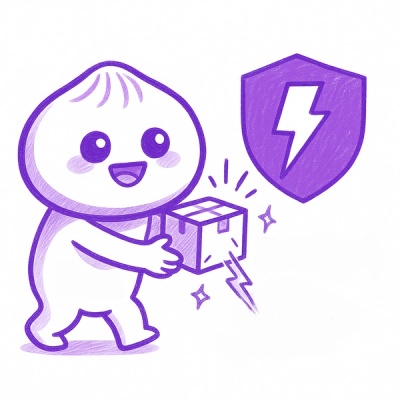
Research
/Security News
Weaponizing Discord for Command and Control Across npm, PyPI, and RubyGems.org
Socket researchers uncover how threat actors weaponize Discord across the npm, PyPI, and RubyGems ecosystems to exfiltrate sensitive data.
betajs-chartjs
Advanced tools
BetaJS-ChartJS is a ChartJS Plugin for the BetaJS Framework.
You can use the library in the browser and compile it as well.
<script src="http://ajax.googleapis.com/ajax/libs/jquery/1.9.1/jquery.min.js"></script>
<script src="chartjs/chartjs.js"></script>
<script src="betajs/dist/betajs.min.js"></script>
<script src="betajs-browser/dist/betajs-browser.min.js"></script>
<script src="betajs-dynamics/dist/betajs-dynamics.min.js"></script>
<script src="betajs-chartjs/dist/betajs-chartjs.min.js"></script>
git clone https://github.com/betajs/betajs-chartjs.git
npm install
grunt
The charts module registers a wrapper for the ChartJS via the dynamics system. You can instantiate it as follows (is recommendable to read the ChartJS Docs page - http://www.chartjs.org/docs/):
BetaJS.Dynamics.Dynamic.activate();
<ba-chart-bars
ba-title=""
ba-legend=""
ba-chartdata=""
ba-chartlabels=""
ba-options=""
ba-randomcolors=""
ba-customdataobj=""
>
</ba-chart-bars>
There are multiple chart types, each one represented by a different dynamic. The currently supported types are:
Each one of these can be implemented with the following partials:
{
display: true,
text: "Title text."
}
{
display: true,
labels: {
fontColor: 'rgb(255, 99, 132)'
}
}
[{
label: "Dataset",
data: [1, 2, 3, 4, 5]
}]
["January", "February", "March", "April"]
*Note: both ba-chartdata and ba-chartlabels are mandatory if ba-customdataobj is null
{
scales: {
xAxes: [{
type: 'linear',
position: 'bottom'
}]
}
}
ba-randomcolors (boolean): If you don't want to configure specific colors for each dataset, you love life on multicolor or you just want to drive the user crazy changing chart colors each time the chart refresh, you must set this partial to true.
ba-customdataobj (object): A custom chart configuration object. Just put the object on this partial and it will display the chart as you want (No matter which partial you use). The object must contain all of the chart configuration. This is ment to be used for very specific user demands. Important!: all of the other configurations on other partials will be ignored, except for the ba-title and the ba-legend . Example, for a line chart:
{
type: 'line',
data: {
datasets: [{
label: 'Scatter Dataset',
data: [{
x: -10,
y: 0
}, {
x: 0,
y: 10
}, {
x: 10,
y: 5
}]
}]
},
options: {
scales: {
xAxes: [{
type: 'linear',
position: 'bottom'
}]
}
}
}
or a bars chart:
{
type: 'bar',
data: {
labels: ["Red", "Blue", "Yellow", "Green", "Purple", "Orange"],
datasets: [{
label: '# of Votes',
data: [12, 19, 3, 5, 2, 3],
backgroundColor: [
'rgba(255, 99, 132, 0.2)',
'rgba(54, 162, 235, 0.2)',
'rgba(255, 206, 86, 0.2)',
'rgba(75, 192, 192, 0.2)',
'rgba(153, 102, 255, 0.2)',
'rgba(255, 159, 64, 0.2)'
],
borderColor: [
'rgba(255,99,132,1)',
'rgba(54, 162, 235, 1)',
'rgba(255, 206, 86, 1)',
'rgba(75, 192, 192, 1)',
'rgba(153, 102, 255, 1)',
'rgba(255, 159, 64, 1)'
],
borderWidth: 1
}]
},
options: {
scales: {
yAxes: [{
ticks: {
beginAtZero:true
}
}]
}
}
}
You can find demos for each dynamic and partial on the demos folder, but I give you a small pie chart example (Remember to load the libraries!):
<ba-chart-pie
ba-chartdata="{{
[
{
label: 'My example dataset',
data: [65, 59, 80, 81, 56, 55, 40]
}
]
}}"
ba-chartlabels="{{['January', 'February', 'March', 'April', 'May', 'June', 'July']}}"
ba-randomcolors="{{true}}"
>
</ba-chart-pie>
<script>
BetaJS.Dynamics.Dynamic.activate();
</script>
and that previous bar chart using the custom data object:
<ba-chart-pie
ba-customdataobj="{{{
type: 'bar',
data: {
labels: ['Red', 'Blue', 'Yellow', 'Green', 'Purple', 'Orange'],
datasets: [{
label: '# of Votes',
data: [12, 19, 3, 5, 2, 3],
backgroundColor: [
'rgba(255, 99, 132, 0.2)',
'rgba(54, 162, 235, 0.2)',
'rgba(255, 206, 86, 0.2)',
'rgba(75, 192, 192, 0.2)',
'rgba(153, 102, 255, 0.2)',
'rgba(255, 159, 64, 0.2)'
],
borderColor: [
'rgba(255,99,132,1)',
'rgba(54, 162, 235, 1)',
'rgba(255, 206, 86, 1)',
'rgba(75, 192, 192, 1)',
'rgba(153, 102, 255, 1)',
'rgba(255, 159, 64, 1)'
],
borderWidth: 1
}]
},
options: {
scales: {
yAxes: [{
ticks: {
beginAtZero:true
}
}]
}
}
}}}"
>
</ba-chart-pie>
<script>
BetaJS.Dynamics.Dynamic.activate();
</script>
Note that it doesn't matter if I put a bar chart config on the ba-chart-pie dynamic, as this overrides all of the configs.
| Resource | URL |
|---|---|
| Homepage | http://betajs.com |
| Git | git://github.com/betajs/betajs-chartjs.git |
| Repository | https://github.com/betajs/betajs-chartjs |
| Blog | http://blog.betajs.com |
| http://twitter.com/thebetajs | |
| Gitter | https://gitter.im/betajs/betajs-chartjs |
| Name | URL |
|---|---|
| betajs | Open |
| betajs-browser | Open |
| betajs-dynamics | Open |
| Name | URL |
|---|---|
| betajs-scoped | Open |
Apache-2.0
FAQs
BetaJS-ChartJS is a ChartJS Plugin for the BetaJS Framework.
We found that betajs-chartjs demonstrated a not healthy version release cadence and project activity because the last version was released a year ago. It has 2 open source maintainers collaborating on the project.
Did you know?

Socket for GitHub automatically highlights issues in each pull request and monitors the health of all your open source dependencies. Discover the contents of your packages and block harmful activity before you install or update your dependencies.

Research
/Security News
Socket researchers uncover how threat actors weaponize Discord across the npm, PyPI, and RubyGems ecosystems to exfiltrate sensitive data.

Security News
Socket now integrates with Bun 1.3’s Security Scanner API to block risky packages at install time and enforce your organization’s policies in local dev and CI.

Research
The Socket Threat Research Team is tracking weekly intrusions into the npm registry that follow a repeatable adversarial playbook used by North Korean state-sponsored actors.